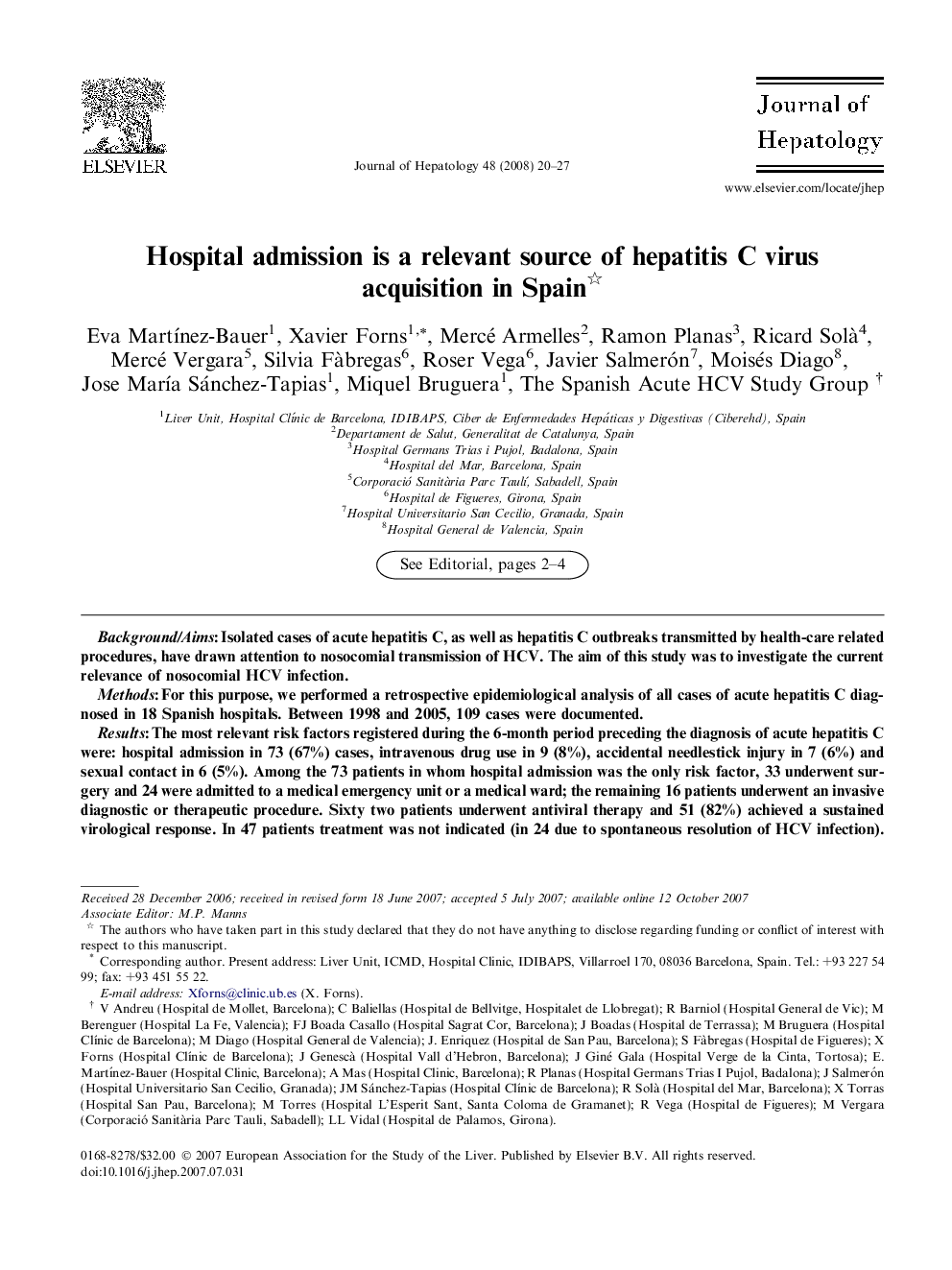| Article ID | Journal | Published Year | Pages | File Type |
|---|---|---|---|---|
| 3315447 | Journal of Hepatology | 2008 | 8 Pages |
Background/AimsIsolated cases of acute hepatitis C, as well as hepatitis C outbreaks transmitted by health-care related procedures, have drawn attention to nosocomial transmission of HCV. The aim of this study was to investigate the current relevance of nosocomial HCV infection.MethodsFor this purpose, we performed a retrospective epidemiological analysis of all cases of acute hepatitis C diagnosed in 18 Spanish hospitals. Between 1998 and 2005, 109 cases were documented.ResultsThe most relevant risk factors registered during the 6-month period preceding the diagnosis of acute hepatitis C were: hospital admission in 73 (67%) cases, intravenous drug use in 9 (8%), accidental needlestick injury in 7 (6%) and sexual contact in 6 (5%). Among the 73 patients in whom hospital admission was the only risk factor, 33 underwent surgery and 24 were admitted to a medical emergency unit or a medical ward; the remaining 16 patients underwent an invasive diagnostic or therapeutic procedure. Sixty two patients underwent antiviral therapy and 51 (82%) achieved a sustained virological response. In 47 patients treatment was not indicated (in 24 due to spontaneous resolution of HCV infection).ConclusionsIn most patients with acute hepatitis C the only documented risk factor associated with the infection is hospital admission. These results stress the need for strict adherence to universal precaution measures. Fortunately, most cases of acute hepatitis C either resolve spontaneously or after antiviral therapy.
